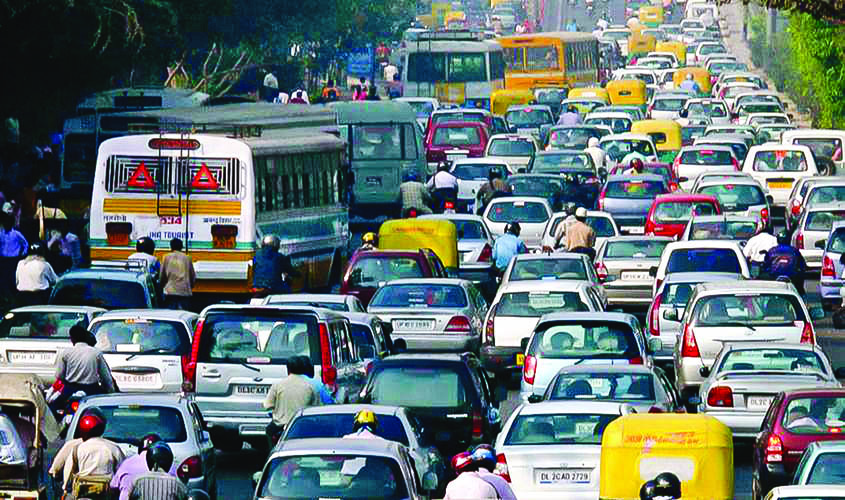The day Parliament passed the Motor Vehicles (Amendment) Bill, heralding much needed changes in a law that had remained static for three decades, Prime Minister Narendra Modi, while addressing a function to commemorate 100 years of Mahatma Gandhi’s Champaran Satyagraha, coined a new slogan: “Swachhagraha, Bapu ko Karyanjali”. Reiterating his clarion call for a “Swachh Bharat”, Modi said that the campaign must receive the same participative impetus from the people as Satyagraha did in moulding the course of history. This, he said, will be a tribute through work (karyanjali) to the Father of the Nation. Swachh Bharat mission has been a serious endeavour. A cess is collected on most transactions to support it. The Prime Minister could have taken his mission for a New India a step forward had he also emphasised the need for orderly use of roads and disciplined driving of vehicles, which the new legislation on road transportation and safety envisages. Unruly traffic and rash driving (according to NCRB 135,000 road deaths occur annually) have to be curbed if India were to emerge “world class”.
In June 2006, while laying the foundation stone of the metro project in Bengaluru, Dr Manmohan Singh had commented that for economic reform to succeed, the nation needs to start observing traffic rules. The former Prime Minister’s remark was hardly taken note of by the media. Observance of law and avoidance of cutting corners are an essential trait in a civilised and orderly society. Economic reform needs a paradigm of compliance. Modi’s “notebandi” instilled among the people the habit of queuing (the accompanying inconvenience notwithstanding). By including traffic discipline in the “Swachhagraha Karyanjali”, Modi could enhance the effort for a cleaner, disciplined order.
The amended law has hiked fines for offences; promoted e-governance; and provided protection for good Samaritans who help road accident victims. Hitherto passers-by were reluctant to help a victim for fear of harassment by police. Now medical attention will precede medico-legal process and those who help victims reach a hospital will not be subjected to police procedure, unless otherwise warranted. Renewal of driving licences, registration of motor vehicles, etc., have been brought under e-governance. The Regional Transport Office (RTO) will not be the sole issuer of registration certificates, the automobile dealers have been empowered. Driving licences and vehicle registration have been linked to Aadhar—this is aimed at making registration of stolen vehicles difficult and easier identification of offending drivers. Driving licences can be obtained and renewed online, without a visit to the transport authority office.
Will the new bring order to our roads? Thirty-five years ago, during the 1982 Asian Games under the influence of Rajiv Gandhi, the “yellow-line” concept was introduced on New Delhi roads. It was extended to other metropolises gradually. Yellow lines mark the centre of a two-way road used for two-way traffic. You may pass on a two-way road if the yellow centre-line is broken. When a solid and a broken yellow line are together, you must not pass if you are driving next to the solid line. Two solid yellow lines mean no passing. This law is hardly observed. The yellow line has been rendered as a decoration in the middle of the roads.
Apart from non-observance of the yellow line, lane driving is neither enforced not observed. Snarls are caused in almost every traffic light, as haphazard lane-changing takes place in the prohibited zone—cars on the left infiltrating on right, and vice-versa. Policemen are more interested in standing away from traffic crossings to challan those who jump the red light (which is essential enforcement), but they turn a Nelson’s Eye to other offences. Traffic police rarely regulates the flow of vehicles. Jams are a regular occurrence even on the Delhi-Gurugram expressway and on roads leading to the airport, as enforcement takes precedence over regulation. Surprisingly, these aspects were not touched upon during the parliamentary discussion on the Motor Vehicles law.
Supreme Court’s bid to curb drunken driving by banning liquor shops and bars in the vicinity of highways is being circumvented by changing the entry point of the vends and bars—even state governments are changing the nomenclature of highway to aid “ease of business” for these outlets.
If Narendra Modi’s “Swachhagraha Karyanjali” to Mahatma Gandhi is to be effective then a scientific approach to road transport and highway safety has to be set in motion. The Prime Minister may like to use his “Mann Ki Baat” to emphasise the need to observe traffic discipline. As for Swachh Bharat’s efficacy, without belittling the noble mission it may be pointed out that a train ride on the rail tracks passing through the National Capital Region is not sans garbage piled on both sides on Railway land just beyond the rail stations, which have spic and span ambience.
Shubhabrata Bhattacharya is a former Editor of Sunday and of National Herald.

